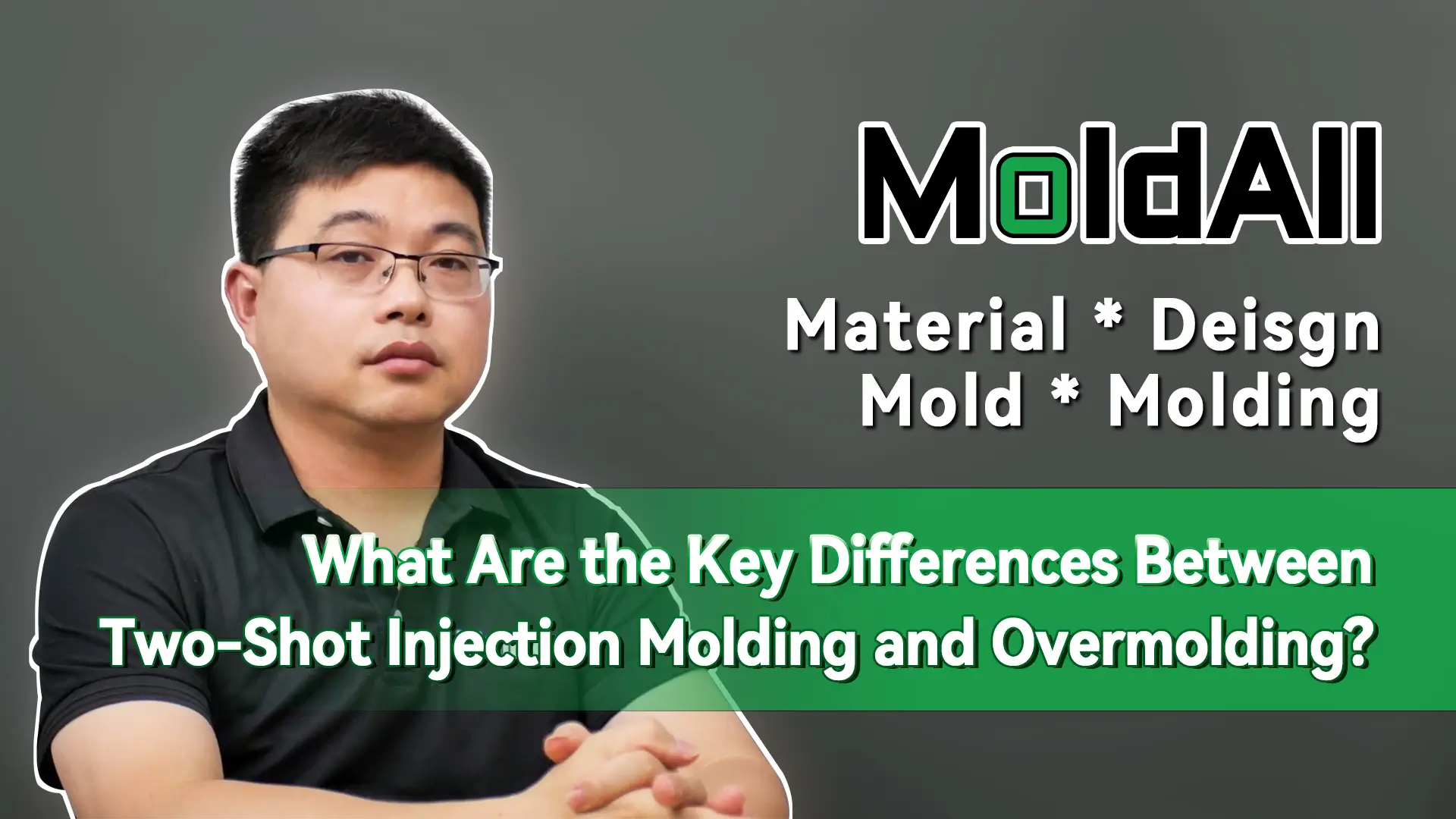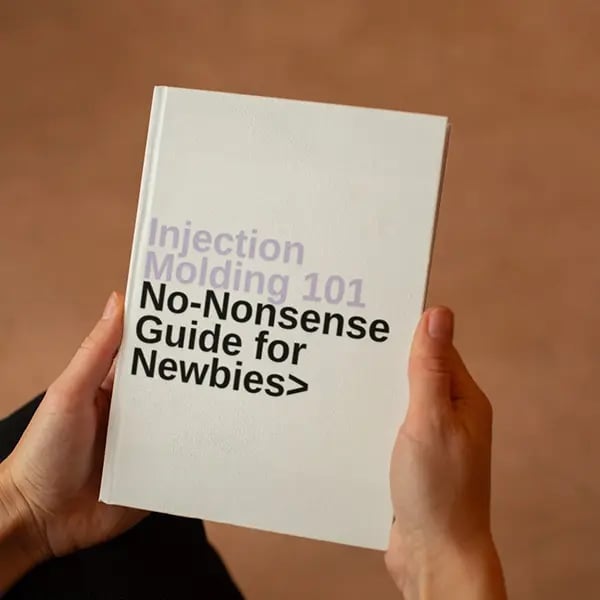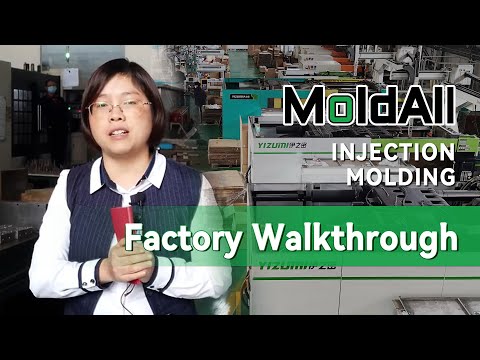
Understanding molding techniques might seem confusing, especially when one must choose between overmolding and two-shot injection molding. I know the feeling!
Choose overmolding over two-shot injection molding when prioritizing surface quality, intricate designs, and small batch production. It’s ideal for enhancing touch, appearance, and protection, and suits budget-conscious projects.
In this article, I share insights from my journey in product design and explain when overmolding really shines. I remember a project needing a soft grip on a tool. Overmolding allowed this without complicating the design. Understanding when to focus on touch and looks is key, especially for intricate shapes. Working on small batches or with a limited budget? Overmolding often proves to be the best choice! Let’s explore these scenarios together. You can use this information to make informed choices in your design and manufacturing processes.
Overmolding is better for enhancing surface performance.True
Overmolding improves surface performance, making it ideal for projects prioritizing touch and aesthetics.
Two-shot injection molding is more cost-effective than overmolding.False
Overmolding can be more cost-sensitive, especially in small batch production compared to two-shot injection molding.

- 1. What are the key advantages of overmolding compared to two-shot injection molding?
- 2. How does overmolding enhance product aesthetics and functionality?
- 3. What types of products benefit most from overmolding techniques?
- 4. Can overmolding really help me save on production costs?
- 5. What challenges should designers consider when opting for overmolding?
- 6. Conclusion
What are the key advantages of overmolding compared to two-shot injection molding?
As a designer, I often find myself unsure when selecting the right manufacturing process. I want to share why overmolding probably has become my top choice in many cases. This method helps enhance both function and appearance.
Overmolding shines compared to two-shot injection molding. It greatly improves appearance and usefulness. It offers custom protection and handles complex shapes with ease. Costs go down in small batch production with overmolding. This method really changes product design.

Enhanced Product Aesthetics and Functionality
One of the primary advantages of overmolding is its ability to improve both the touch and appearance of a product’s surface. For instance, a soft rubber layer can be added to the handle of a tool, providing a comfortable grip that enhances user experience.
Similarly, adding a leather or metal texture to electronic devices can elevate their aesthetic appeal, making them more attractive to consumers.
In contrast, two-shot injection molding focuses on combining materials for structural integrity rather than enhancing surface features, which limits its effectiveness in this area.
To understand the difference further, consider this table comparing surface enhancement capabilities:
| Feature | Overmolding | Two-Shot Injection Molding |
|---|---|---|
| Surface Texture | Soft, textured options available | Limited to structural design |
| Touch Improvement | Excellent | Moderate |
| Aesthetic Appeal | High | Low |
Surface Protection Capabilities
Overmolding also excels in providing surface protection functions such as waterproofing and corrosion resistance.
For example, applying a UV-proof layer on construction plastic pipes or an anti-corrosion coating on metal surfaces ensures durability in challenging environments.
On the other hand, two-shot injection molding primarily combines materials for internal performance, which can restrict the choice of protective coatings.
As such, overmolding offers a tailored approach to material selection for specific protective needs. This could be explored further by looking into specific protective materials1.
Suitability for Complex Shapes
Another advantage of overmolding is its ease of application on complex-shaped products.
For intricate designs that have already been molded, overmolding allows for additional layers without extensive remolding.
This is particularly beneficial for products with carvings or textures where achieving a good fit is essential. In contrast, two-shot injection molding would require complex molds that can significantly increase production costs and time.
For a clearer view, here’s a comparison of the suitability of both methods:
| Product Complexity | Overmolding | Two-Shot Injection Molding |
|---|---|---|
| Complex Shapes | Easily accommodates | Difficult to mold |
| Existing Products | Can be modified easily | Challenging |
Cost Efficiency in Small Batches
When it comes to small batch production or projects sensitive to mold costs, overmolding proves advantageous due to its simpler mold designs.
This significantly reduces the initial investment required, making it suitable for small runs where costs must be minimized.
Moreover, the flexibility in adjusting coating materials during the production process allows for quick iterations and testing without incurring high costs typically associated with two-shot injection molding.
Here’s how the cost structures compare:
| Production Scale | Overmolding | Two-Shot Injection Molding |
|---|---|---|
| Small Batch | Low mold costs | High mold costs |
| Flexibility | High | Low |
Overall, these aspects highlight how overmolding can be a superior choice in various scenarios compared to two-shot injection molding.
Overmolding improves product aesthetics significantly.True
Overmolding enhances the touch and appearance of products, making them more appealing to consumers compared to two-shot injection molding.
Two-shot injection molding is cheaper for small batches.False
Overmolding has lower mold costs for small batch production, making it more cost-effective than two-shot injection molding in such cases.
How does overmolding enhance product aesthetics and functionality?
Ever held a product that felt perfect in your hand? The smooth grip and shiny finish don’t happen by chance. Overmolding is a really interesting method. It changes how a product looks and feels. But how does it really achieve this transformation?
Overmolding improves product looks by adding another layer of material that makes it more attractive. This layer also feels nice to touch. It offers practical benefits too. It shields the product from environmental elements.

Overmolding is a versatile manufacturing technique that greatly enhances both the aesthetics and functionality of products. By applying a second layer of material to an existing substrate, designers can achieve remarkable improvements in various aspects of product design.
Improving Touch and Appearance
When the main goal is to enhance the surface performance of a product, overmolding stands out. For instance, consider a hand tool with a plastic handle. By adding a layer of soft rubber through overmolding, manufacturers can create a comfortable grip that improves user experience. Similarly, applying textured materials, like leather or metal finishes, elevates the overall appearance and perceived value of electronic devices.
Examples of Aesthetic Enhancements
| Product Type | Aesthetic Material Used | Result |
|---|---|---|
| Hand Tools | Soft Rubber | Comfortable grip |
| Electronics Housing | Leather Texture | Enhanced premium look |
Enhanced Surface Protection
Beyond aesthetics, overmolding provides significant functional benefits such as enhanced protection against environmental factors. For example, a UV-resistant coating can be overmolded onto plastic pipes used in construction to protect against sun damage. Similarly, an anti-corrosion layer can be added to metal products, ensuring longevity and durability.
Protection Applications
| Material Type | Protection Offered | Common Use Case |
|---|---|---|
| UV-Proof Material | Sun protection | Plastic construction pipes |
| Anti-Corrosion Coating | Corrosion resistance | Metal components |
Facilitating Complex Shapes
Overmolding is particularly advantageous for products with intricate designs. This technique allows for the easy addition of surface materials without the need for complex mold designs required in traditional methods like double-shot injection molding. For example, if you have a plastic item with elaborate carvings, overmolding can apply a surface layer that fits perfectly.
Complex Shape Advantages
| Product Complexity | Overmolding Benefit | Alternative Method |
|---|---|---|
| Intricate Designs | Easy surface material application | Double-shot injection requires complex molds |
Cost Efficiency in Production
For projects that are cost-sensitive or involve small batch production, overmolding offers substantial mold cost advantages. The simplicity of overmolding molds typically leads to lower costs compared to double-shot molds. Additionally, the flexibility to switch out coating materials during production allows for low-cost trial and error.
Cost-Effectiveness Insights
| Production Type | Overmolding Advantage | Double-Shot Injection Issue |
|---|---|---|
| Small Batch Production | Lower mold costs | High fixed costs |
| Flexible Prototyping | Quick adjustments | Difficult to modify |
Overall, overmolding significantly enhances product aesthetics and functionality, making it an invaluable technique for modern product design and manufacturing. Learn more about overmolding benefits2 to explore its applications further.
Overmolding improves product grip and comfort.True
By adding a soft rubber layer, overmolding enhances the grip of hand tools, improving user comfort and experience.
Overmolding increases production costs for small batches.False
Overmolding typically reduces mold costs, making it more cost-effective for small batch production compared to double-shot injection molding.
What types of products benefit most from overmolding techniques?
Do you ever think about how some products look beautiful and work well? Let us take you on a journey through the interesting world of overmolding techniques. These techniques really transform your designs.
Overmolding techniques are most useful for products that really need better surface performance, complicated shapes or are produced in small quantities. The process improves appearance, grip and durability. It also reduces costs effectively.

Products Focused on Surface Performance
Overmolding techniques shine when the goal is to enhance surface performance.
For example, consider tools where a soft rubber layer is added to a plastic handle. This not only improves the grip but also enhances the aesthetics of the tool. Similarly, applying a layer with a leather or metallic texture to electronics can elevate their perceived value.
| Product Type | Overmolding Benefit |
|---|---|
| Hand Tools | Improved grip and comfort |
| Consumer Electronics | Enhanced aesthetics and touch |
Additionally, products requiring surface protection, such as pipes or metal components, can benefit from overmolding. Coatings can provide specific protections like waterproofing or corrosion resistance using selected materials, making overmolding a preferred option for many manufacturers. You can learn more about the protective materials in surface protection techniques3.
Complex Shaped Products
For products with intricate designs, overmolding offers a significant advantage. Complex shapes, especially those already molded, can be treated with additional layers without the need for complicated new molds.
For instance, plastic items with detailed carvings can have another material added via overmolding, which is less feasible with traditional double-shot molding due to complex mold requirements.
| Product Characteristics | Overmolding Advantage |
|---|---|
| Complex Carvings | Easier surface treatment |
| Existing Products | Modification without structure change |
This technique allows for flexibility in adapting existing products, enabling updates like a new coating for old furniture or protective layers for industrial equipment without needing to redesign the entire product. If you’re interested in exploring how these modifications work, check out product transformation through overmolding4.
Small Batch Production
Overmolding is particularly beneficial for projects that involve small batch production or are sensitive to costs.
The mold costs associated with overmolding are generally lower than those required for double-shot injection molding. This is especially true in cases where simpler molds suffice or in processes like manual overmolding that do not require extensive setup.
| Production Type | Cost Advantages |
|---|---|
| Small Batch | Lower mold costs |
| Prototyping | Flexible material adjustments |
Moreover, the ability to easily switch out materials allows designers to conduct low-cost trials during development phases. This flexibility helps test various designs and performances without significant financial risk. For further insights on cost-effective manufacturing processes, explore cost management in product design5.
Overmolding enhances grip and comfort in hand tools.True
Adding a soft rubber layer improves the grip and comfort of hand tools, making them easier to use.
Overmolding is not cost-effective for small batch production.False
Overmolding generally has lower mold costs, making it suitable for small batch production and prototyping.
Can overmolding really help me save on production costs?
If you are similar to me, always searching for methods to simplify production while keeping quality high, then looking into overmolding could be a valuable change. Overmolding might really transform your work process. Let us explore how this technique probably saves money in surprising situations!
Overmolding probably reduces production costs. It improves product appearance and simplifies complex shapes. This method is very cost-effective for small batches. Greater flexibility and lower mold costs are advantages of overmolding. Compared to double-shot injection molding, it is an ideal choice for many manufacturing situations.

When Improving Product Surface Performance Matters
When I first heard about overmolding, I doubted it. It seemed hard to believe that one method could simplify processes and reduce expenses so effectively. But as I learned more, I discovered its amazing potential, especially in improving product performance and managing complex designs.
Overmolding can be particularly advantageous when the primary goal is to enhance the touch and aesthetics of a product. For instance, adding a soft rubber layer on a plastic tool’s handle not only improves grip but also elevates user experience. This technique eliminates the need for complex material combinations seen in methods like double-shot injection molding, as it typically only requires adding one layer of material.
Moreover, if surface protection is critical—such as waterproofing or UV resistance—overmolding excels by allowing specific materials with protective properties to be used. For example, coating plastic pipes with a UV-proof layer significantly extends their lifespan in construction applications.
Explore more about surface performance enhancements6
Handling Complex Shapes with Ease
We know some designs are very tricky. Remember the time I encountered a product with detailed carvings? Redesigning molds for double-shot injection seemed intimidating. Overmolding saved the day!
Another scenario where overmolding shines is when dealing with complex product shapes or modifications. For intricate designs, overmolding can seamlessly add surface materials without the extensive mold redesign that double-shot injection might require. Consider plastic items with detailed carvings; overmolding can apply additional coatings that fit these contours perfectly. This adaptability makes it a preferred choice for surface treatments in complicated designs.
For updating existing products – like refreshing old furniture or adding protective coatings to equipment – overmolding is incredibly flexible. Unlike double-shot methods that require a complete restart, overmolding enhances without losing what already exists.
Learn about modifying existing products effectively7
Cost-Effectiveness in Small Batch Production
One of my favorite aspects of overmolding is its affordability, especially for small batch production. When I needed to produce a limited number of components, I didn’t want to spend too much on complex molds like those required for double-shot injection molding.
The molds required for overmolding are simpler and less expensive than those used in double-shot injection molding. In fact, for certain straightforward overmolding processes, specialized molds may not even be necessary, allowing for manual or hot overmolding techniques that drive down costs.
| Aspect | Overmolding | Double-Shot Injection Molding |
|---|---|---|
| Mold Complexity | Simple | Complex |
| Cost | Lower | Higher |
| Flexibility | High | Low |
| Suitability for Small Batches | Excellent | Poor |
Additionally, the flexibility inherent in overmolding allows quick adjustments to materials and processes, making it ideal for product development stages or customized production runs. Testing different coatings becomes less costly and cumbersome compared to the high stakes of adjusting double-shot molds.
Discover the benefits of flexible production processes8
In my journey as a product designer, overmolding proved to be more than a cost-saving method – it’s a way to create better products and improve user satisfaction. So, does overmolding really help reduce production costs? Yes, it does! With its versatility and efficiency, it’s worth considering for your next project.
Overmolding enhances product aesthetics effectively.True
Overmolding adds materials that improve grip and appearance, enhancing user experience without complex processes.
Overmolding is cheaper than double-shot injection molding.True
The simpler molds required for overmolding significantly lower production costs, especially in small batches.
What challenges should designers consider when opting for overmolding?
I am a designer and often navigate the tricky waters of overmolding. Overmolding involves more than looks or usefulness. Real challenges appear during the process. Let’s explore these hurdles together.
Designers need to think about challenges like how materials work together, heat management, production costs and quality control when choosing overmolding. Solving these problems early probably improves the final design. Thinking ahead really matters.

Understanding Material Compatibility
One major challenge is understanding material compatibility. I worked on a project layering soft rubber over a hard plastic core. It seemed easy but required research on the adhesive properties of both materials. If they don’t bond well, peeling or failure might occur.
To reduce these risks, I conduct compatibility tests and study material data sheets9. It’s like finding the perfect dance partner. If they don’t move well together, disaster follows!
Managing Thermal Properties
Thermal management is another big hurdle. Overmolding uses many materials with different thermal expansion rates. I recall a project where my product warped because one material expanded and the other didn’t. That was a frustrating lesson!
Understanding material thermal properties is vital to avoid such issues. Simulation tools like thermal analysis software10 help predict material behavior in real-world situations. Investing time upfront pays off and prevents future headaches.
Designing for Complex Shapes
Creating complex product shapes makes overmolding both an advantage and a challenge. I’ve faced intricate shapes that complicated the process, especially when precise alignment was necessary.
Table: Common Challenges in Overmolding Complex Shapes
| Challenge | Solution |
|---|---|
| Alignment Issues | Use guide features in the mold |
| Material Flow Problems | Optimize injection settings |
| Surface Finish Consistency | Conduct pre-production trials |
Using advanced CAD tools and simulation software11 helps visualize and solve these complexities before manufacturing starts.
Balancing Cost and Production Volume
Cost always concerns designers, especially in small batch production or tight-budget projects. Overmolding typically has lower mold costs than double-shot injection molding due to simpler designs.
However, changing materials may lead to unexpected expenses if not planned carefully. Setting a clear budget and preparing for cost fluctuations matters. I evaluate:
- Material Costs: I look at raw material expenses and their project cost impact.
- Production Run Size: I understand how batch sizes affect mold costs and material efficiency to make smart decisions.
Testing and Quality Assurance
Testing and quality assurance are crucial. Every material combination needs rigorous testing to meet standards. From personal experience, robust quality control for adhesion strength, durability, and surface finish is vital.
For extra assurance, consider utilizing testing labs12 that assess overmolded products to provide insights into potential weaknesses.
By addressing these challenges proactively, designers can navigate overmolding complexities and use its benefits effectively. Every challenge enhances our skills and insights, making us better designers over time.
Material compatibility is crucial in overmolding design.True
Incompatible materials can lead to adhesion failures, affecting product integrity. Designers must ensure proper material selection to avoid issues.
Thermal properties do not impact overmolding success.False
Differing thermal expansion rates can cause warping or cracking. Understanding thermal dynamics is essential for successful overmolding.
Conclusion
Overmolding excels in improving product aesthetics, handling complex shapes, and reducing costs for small batches compared to two-shot injection molding.
-
Explore this link to learn more about the unique benefits of overmolding and how it compares with other molding techniques. ↩
-
Discover detailed insights on how overmolding can elevate your product designs and functionalities. ↩
-
Explore this link to discover the specific applications of overmolding in various industries and see how it can enhance your product designs. ↩
-
Learn about innovative transformations through overmolding techniques that can upgrade existing products without starting from scratch. ↩
-
This resource will help you understand how to manage costs effectively while utilizing overmolding techniques in your designs. ↩
-
Learn how overmolding can save money and resources in manufacturing processes. ↩
-
Understand the differences between overmolding and double-shot injection molding. ↩
-
Find out how to modify existing products using overmolding techniques. ↩
-
Discover practical tips for overcoming common challenges faced during overmolding to improve your design outcomes. ↩
-
Learn how to effectively manage thermal properties in overmolding for better product performance. ↩
-
Find out how to optimize your designs for complex shapes when using overmolding techniques. ↩
-
Understand cost management strategies for small batch production when using overmolding. ↩






